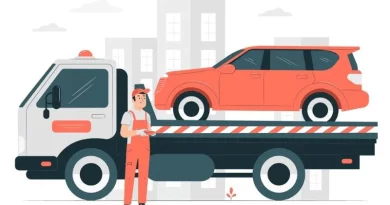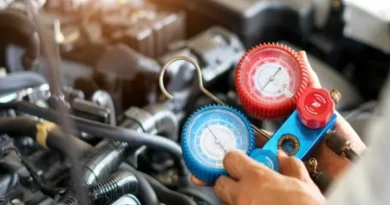The Impact of Modern Technology on Car Accident Prevention
Last updated on July 25th, 2024 at 07:13 am
Car accidents are one of the biggest issues worldwide, as each year, hundreds of thousands of car crashes occur. With the advent of modern technology, though, more and more car accidents can be prevented as several advanced safety features and systems are introduced.
Although motor vehicle accidents cannot be entirely prevented, these technological advancements still aim to reduce their numbers. They do this by improving vehicle stability and control, enhancing driver awareness, and assisting in avoiding or mitigating collisions and other methods.
To understand exactly the impact of modern technology on car accident prevention, here are some key ways in which these technologies have contributed to this goal and how they work:
Advanced Driver Assistance Systems (ADAS)
ADAS technologies have helped many drivers avoid potential collisions in various ways. They use sensors, cameras, and algorithms to assist drivers in real time in several ways. For example, some common ADAS features integrated into various modern vehicles include:
Forward Collision Warning (FCW)
The FCW feature in vehicles is an alerting system that lets drivers know if an impending collision is about to occur. This system works by detecting the vehicles in front of your own. If these vehicles move too slowly or stop moving, the FCW will alert the driver right away.
FCW systems use lasers, radars, or cameras to scan the road ahead and warn the driver, and according to statistics, they have contributed to reducing rear-end-collisions by 22% where no injuries occurred, and up to 71% of crashes were severe or fatal injuries would have occurred.
Automatic Emergency Braking (AEB)
Sometimes, drivers experience shock or cannot hit the brakes on time to avoid collisions for other reasons, such as speeding, impairment, or distracted driving. However, AEB systems automatically use the brakes to prevent collisions or at least mitigate them better. They do this through the usage of sensors that trigger the braking system.
Lane Departure Warning (LDW)
Not all drivers keep their lane, but more often than not, this isn’t an intentional act. Sometimes, driver fatigue comes into play, among other reasons. This is where LDW systems come into play, which alerts drivers if they are about to drift out of their lane. These systems work by monitoring the left and right side lane markers.
Blind Spot Detection (BSD)
All vehicles have their blind spots, especially larger ones such as trucks. To mitigate the issue of not being able to see other vehicles if they are situated in your blind spot, BSD systems were integrated to warn drivers if other traffic participants are located in their blind spots. They use sensors to detect other vehicles.
Adaptive Cruise Control (ACC)
Tailgating has long been a road issue and can contribute to car accidents. However, modern technologies have come up with ACC systems to prevent this. ACC systems will automatically adjust the speed of a vehicle if they are too close to another vehicle and help prevent tailgating.
Pedestrian Detection
Pedestrian accidents are unfortunately common, as about 100,000 such incidents occur yearly in the U.S. alone. Fortunately, various modern technologies are implemented to reduce these types of accidents. One of them is through pedestrian detection systems. This advanced sensor is placed into modern cars to detect pedestrian presence and alert drivers. Some of these systems also include automatic brakes.
Electronic Stability Control (ESC)
Loss of traction and skidding often contribute to single-vehicle crashes. However, modern ESC systems have been effective in mitigating crashes and rollovers. These systems use sensors to assist drivers in maintaining control during maneuvers.
For example, the system can individually apply brakes to the necessary wheels or adjust engine power to enhance control. This is particularly effective when sudden lane changes occur or in the event of emergency steering situations.
Anti-lock Braking Systems (ABS)
Slippery surfaces are a common factor that leads to car accidents. Fortunately, ABS systems can help reduce stopping distances and improve steering responsiveness, allowing drivers to maintain steering control during hard braking. ABS helps prevent wheel lock-up in such instances.
Vehicle-to-Vehicle (V2V) Communication
V2V technology is particularly useful in situations where visibility is limited. Drivers can use this type of technology to communicate wirelessly and exchange information such as position, speed, or direction.
Vehicle-to-Infrastructure V2I) Communication
V2I technology works similarly to V2V technology. However, instead of connecting drivers to other drivers, they connect drivers to infrastructures. This includes traffic lights, road signs, and other management systems allowing drivers to access real-time traffic information. This helps improve traffic flow, warns drivers about potentially dangerous road conditions, and prevents accidents.
Rearview Cameras and Sensors
Rearview cameras and sensors can assist drivers in various ways to prevent accidents from occurring. They aid drivers in maneuvers and help them park safely as they provide a clearer view of the area and alert them if objects are close.
Driver Monitoring Systems
Driver monitoring systems are commonly used in the trucking industry and have aided in accident prevention. These systems keep track of driver behavior, speed, and brakes and can even detect signs of fatigue, distraction, or impairment, which are common contributing factors that lead to many motor vehicle accidents. Such monitoring systems will alert or warn drivers when needed to help them remain focused.
Telematics and Data Analytics
Telematics systems and big data analytics also take into consideration driver behavior. These systems can work in tandem with other modern technologies to assist in car accident prevention. The data collected can be used to provide drivers with feedback and encourage safer driving habits.
Transportation managers can use the data collected, such as a driver’s speeding and braking patterns and other information, to identify areas of improvement and work towards creating better training programs to enhance safety and discourage reckless driving.
With all these considerations in mind, it’s easy to see why modern technology greatly impacts car accident prevention. Although some systems have yielded better results than others, technologies evolve, and what we learn from them today can be used for the betterment of tomorrow.




